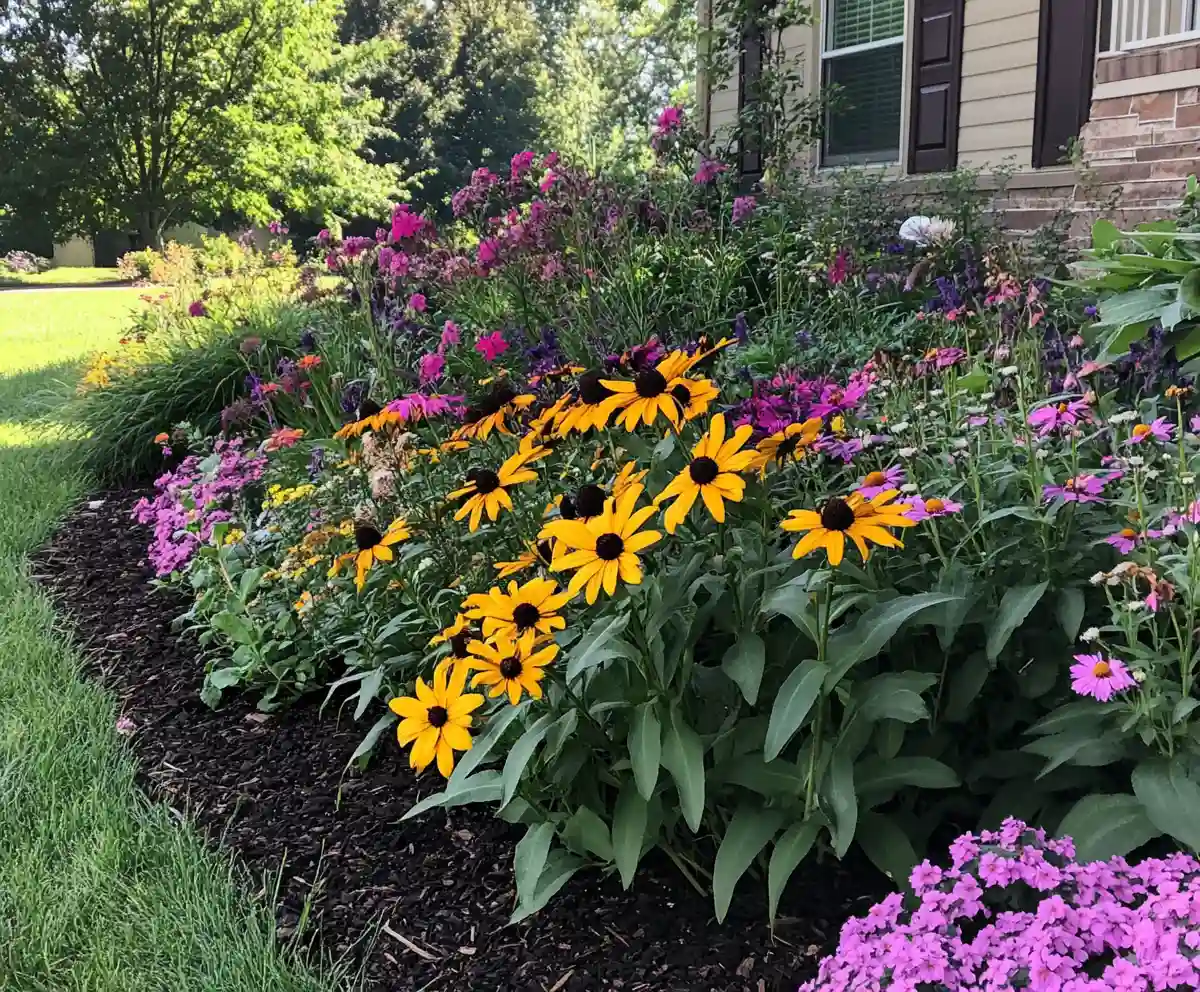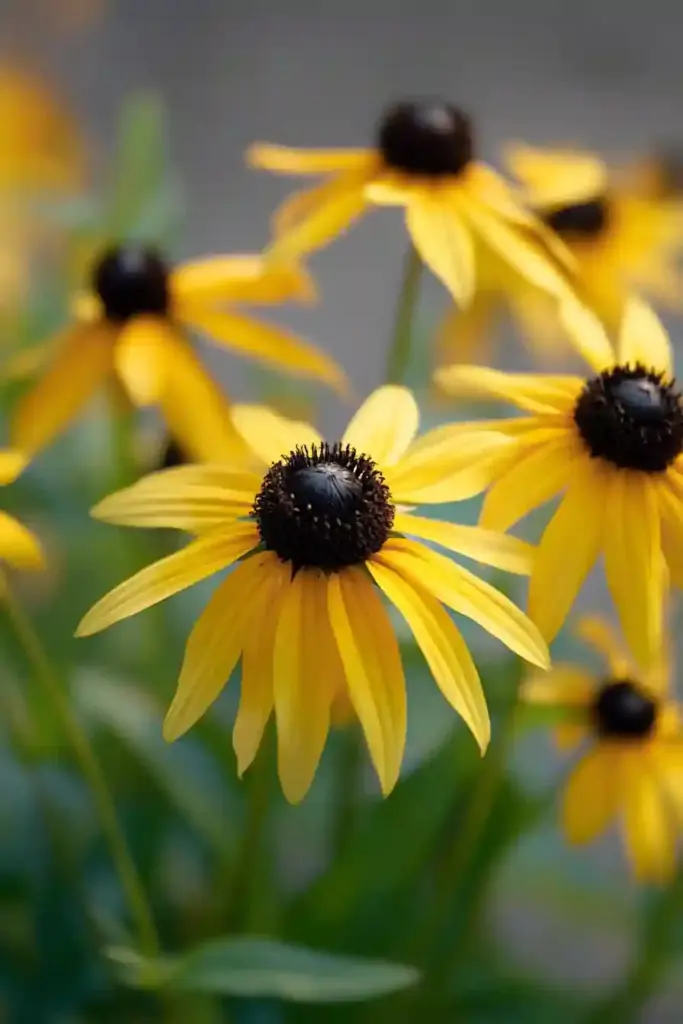If you’ve got a garden soaked in sunshine, you need plants that can take the heat—literally. The struggle to find flowers that won’t wilt or fry under the full blaze of the sun (especially in southern climates) is real. But good news: there are plenty of full sun perennials that don’t just survive—they thrive—with little effort from you.
Whether you’re designing a new sunny border, filling in those hot, exposed patches, or refreshing a container garden on the patio, the low-maintenance perennials we’ve rounded up are colorful, reliable, and resilient. These blooms can handle drought, attract pollinators, and bring season-long interest, making them perfect for busy or beginner gardeners alike.
From Black-eyed Susans to showstopping Pink Muhly Grass, this list of tough, sun-loving perennials will brighten your landscape all summer long—and come back year after year with minimal fuss.
🌼 1. Black-eyed Susan (Rudbeckia)
Zones: 4–9
Bloom Time: Late spring to early fall
Height: 1′–3′
Spread: 1′–2′
Black-eyed Susans are an American classic—and for good reason. These cheerful yellow flowers with dark centers are more than just pretty faces. Once established, they’re impressively drought-tolerant, heat-resistant, and can handle the most intense afternoon sun without flinching.
Perfect for filling in borders or adding vibrant pops of color, Rudbeckia is a go-to for sunny beds. Deadheading spent blooms encourages more flowering, but even without the extra attention, they’ll keep on blooming. They thrive in well-drained soil and are a magnet for butterflies and bees, making them both beautiful and beneficial.
Why it’s a keeper:
- Long-lasting blooms
- Low maintenance once established
- Native and pollinator-friendly
🌿 Pro Tip: Pair them with ornamental grasses or purple coneflowers for a stunning contrast that thrives in the same conditions.
💜 2. Russian Sage (Perovskia atriplicifolia)

Zones: 4–9
Bloom Time: Early summer to fall
Height: 2′–4′
Spread: 2′–4′
If you’re looking for a fuss-free perennial with bold color and texture, Russian Sage checks every box. With its lacy gray-green foliage and clouds of soft purple-blue flowers, this plant adds an airy, romantic feel to sunny borders.
It thrives in poor soil, doesn’t need fertilizing, and shrugs off drought once established. Plus, it’s deer-resistant, rabbit-resistant, and practically maintenance-free. No deadheading or dividing required—just plant it and let it shine. Trim it back lightly in early spring if you’d like to shape it, but that’s totally optional.
Why it’s a keeper:
- Zero-maintenance beauty
- Thrives in heat and dry soil
- Attracts pollinators (especially hummingbirds!)
🌿 Design Tip: Use Russian Sage in mass plantings or as a soft-textured backdrop for brighter flowers like daylilies or black-eyed Susans.
🍁 3. Sedum ‘Autumn Joy’
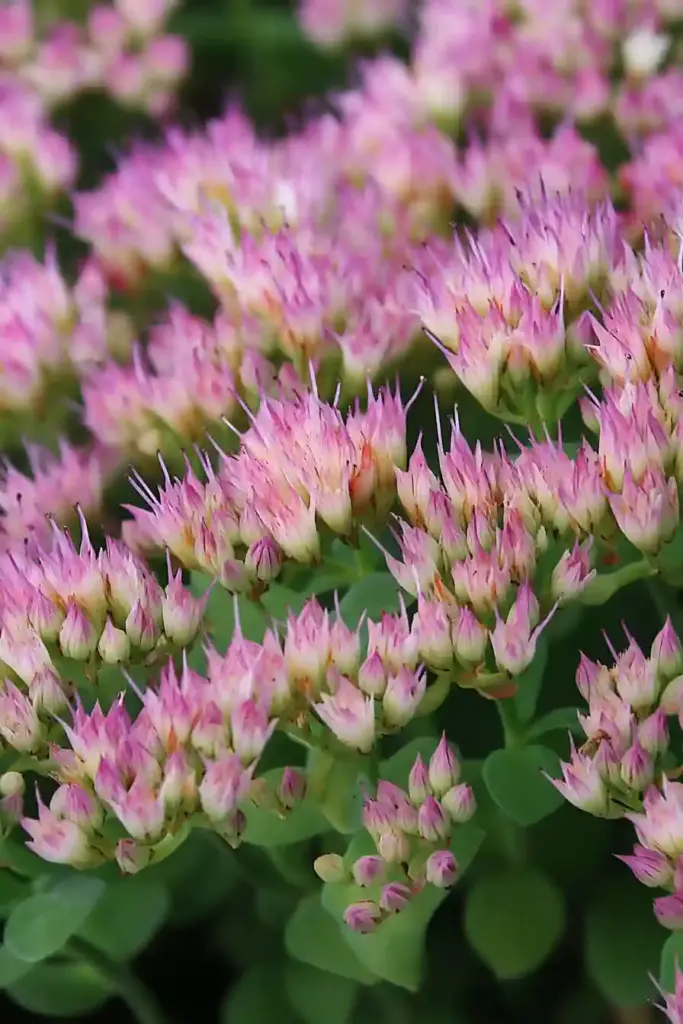
Zones: 3–8
Bloom Time: Late summer to fall
Height: 18″–24″
Spread: 18″–24″
Sedum ‘Autumn Joy’ is a must-have for any sunny garden, especially if you want color late in the season when most other blooms are fading. This easygoing succulent features fleshy green leaves and large flower heads that start out soft pink and deepen to rich bronze as fall approaches.
It prefers dry, well-drained soil and doesn’t like too much fuss—perfect for those hot, sunny spots where other plants struggle. And because it’s a late bloomer, it also serves as an important nectar source for bees and butterflies gearing up for winter.
Why it’s a keeper:
- Low water needs
- Stunning fall color transition
- Great for pollinators
🌿 Style Tip: Leave the dried flower heads through winter for beautiful texture and interest—plus, the birds will thank you.
🌸 4. Creeping Phlox (Phlox subulata)
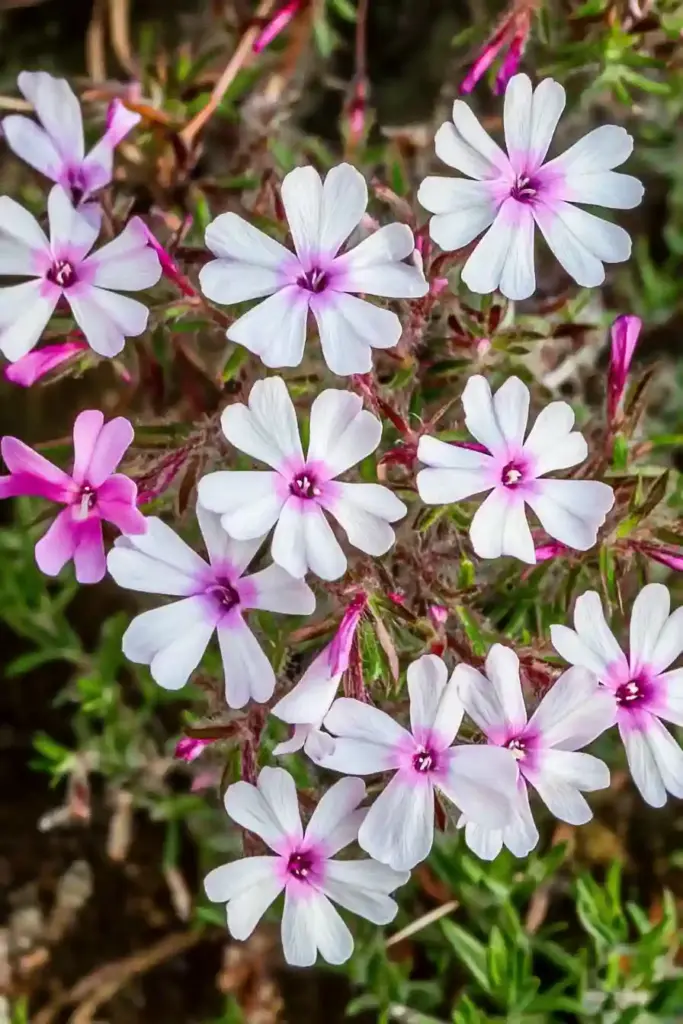
Zones: 3–9
Bloom Time: Early spring
Height: 4″–6″
Spread: 2′–3′
If you’re dreaming of a vibrant, flower-covered carpet in spring, Creeping Phlox is your go-to ground cover. This low-growing perennial explodes into bloom with clouds of pastel pinks, purples, blues, or whites—perfect for rock gardens, borders, or spilling over retaining walls.
It thrives in full sun and well-drained soil, especially sandy or gravelly areas. Once established, it’s drought-tolerant and requires little to no maintenance. And come springtime? It absolutely steals the show.
Why it’s a keeper:
- Dense, colorful ground cover
- Great for erosion control
- Deer-resistant and pollinator-friendly
🌿 Bonus Tip: Combine it with spring bulbs like daffodils or tulips for a breathtaking layered effect.
☀️ 5. Daffodils (Narcissus)
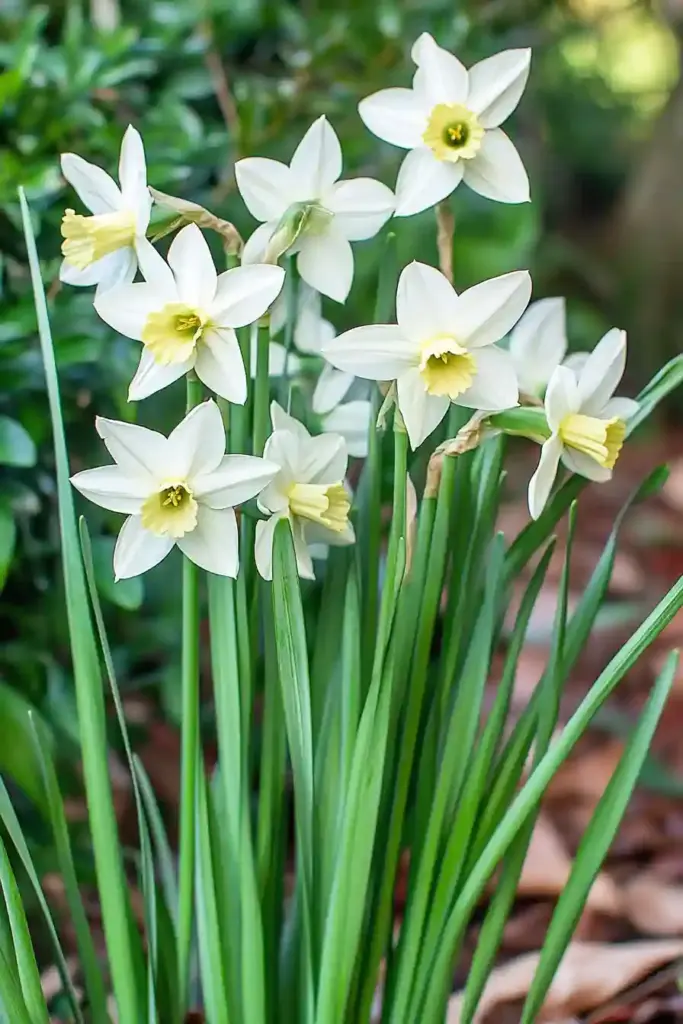
Zones: 4–9
Bloom Time: Early to mid-spring
Height: 12″–24″
Spread: 6″–12″
Few flowers scream “spring” like daffodils. These cheerful, trumpet-shaped blooms are among the easiest bulbs to grow—and once they’re in the ground, they pretty much take care of themselves. They’re also resistant to deer, rabbits, and most pests, which makes them perfect for sunny borders and naturalized garden beds.
Daffodils thrive in full sun and well-drained soil. And the best part? They multiply over time, creating larger and more dazzling displays every year. Not a fan of classic yellow? No worries—there are white, coral, and even double-flowered varieties to choose from.
Why it’s a keeper:
- Plant once, enjoy for years
- Naturalizes easily without being invasive
- No maintenance needed after planting
🌿 Pro Tip: Let the foliage die back naturally after blooming—this helps the bulbs store energy for next year.
💜 6. Catmint (Nepeta ×faassenii)
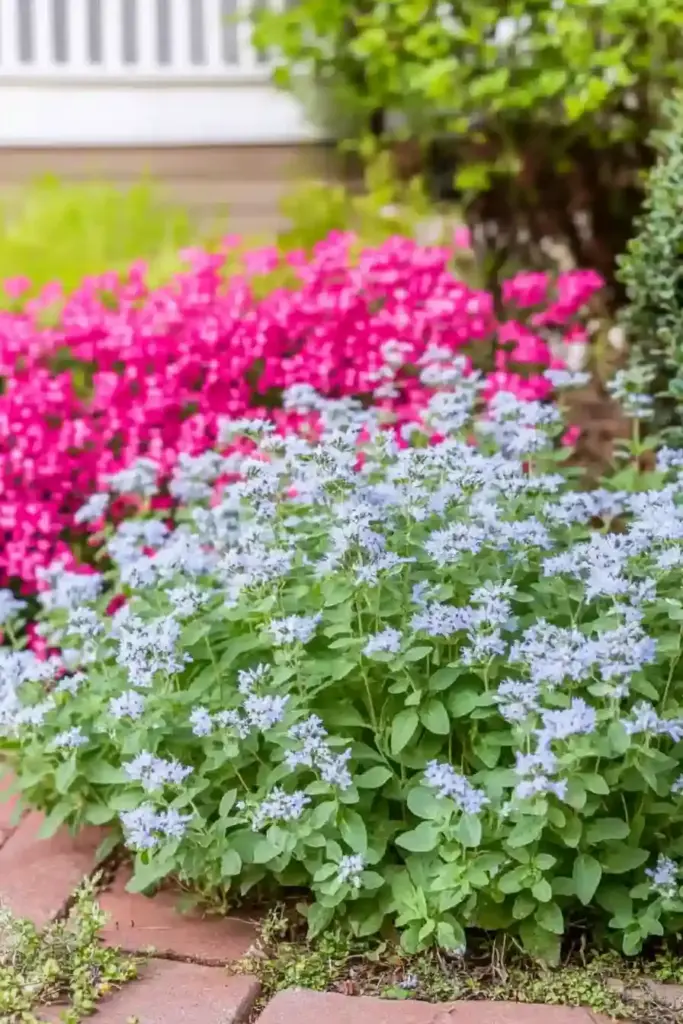
Zones: 3–9
Bloom Time: Late spring to early summer
Height: 9″–18″
Spread: 18″–36″
Catmint is a compact, sun-loving perennial known for its silvery foliage and lavender-blue blooms that bring a soft, cottage-garden charm to any sunny space. It thrives in poor, well-drained soil and is incredibly easy to grow—no green thumb required.
Beyond its calming scent and beautiful flowers, Catmint is drought-tolerant, deer-resistant, and attracts a steady stream of bees and butterflies. It pairs beautifully with roses, salvia, and early bloomers like creeping phlox. And yes—cats do love it, so don’t be surprised if you catch a furry visitor rolling in it now and then!
Why it’s a keeper:
- Low-maintenance and fragrant
- Long blooming and tolerant of tough conditions
- Loved by pollinators (and maybe your cat, too)
🌿 7. Lavender (Lavandula)
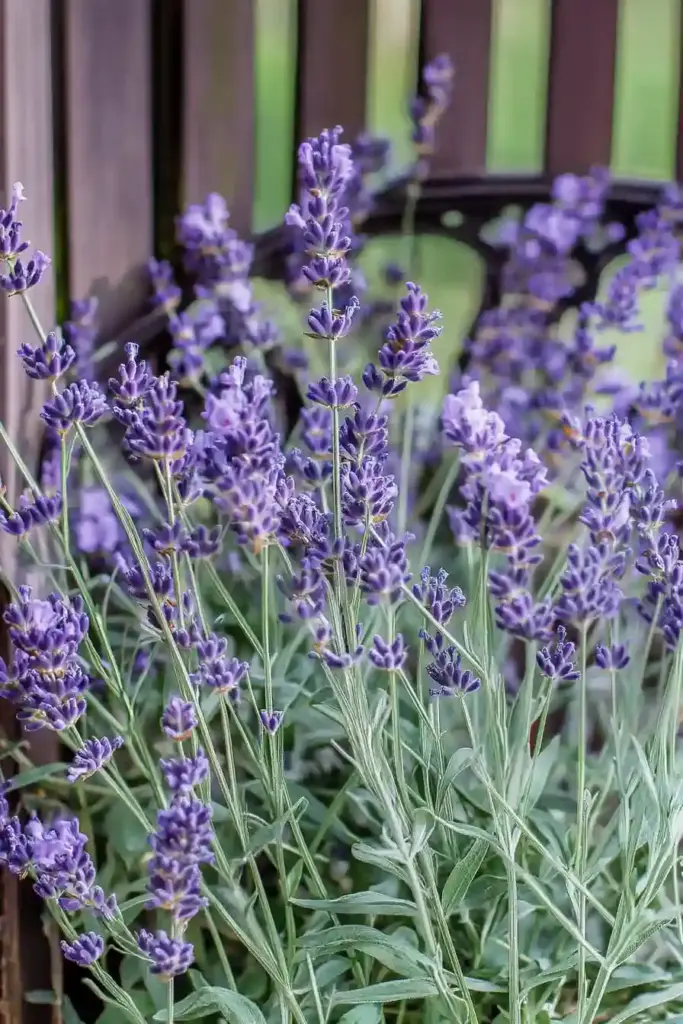
Zones: 5–8
Bloom Time: Early to mid-summer
Height: 12″–24″
Spread: 12″–24″
Lavender is more than just a pretty plant—it’s a garden multitasker. Its silvery-green foliage and purple flower spikes add texture and fragrance, while its calming scent deters deer, rabbits, and even some pests. In full sun and well-drained soil, this Mediterranean native thrives with almost no effort.
Lavender loves dry conditions, making it ideal for hot, sunny spots. While it might take a year or two to fully establish, it rewards you with beautiful, fragrant blooms year after year. Bonus: it’s perfect for drying and using in sachets, teas, and home decor.
Why it’s a keeper:
- Fragrant and functional
- Drought-tolerant and low maintenance
- Attracts bees and butterflies, repels deer
🌞 8. Daylily (Hemerocallis)
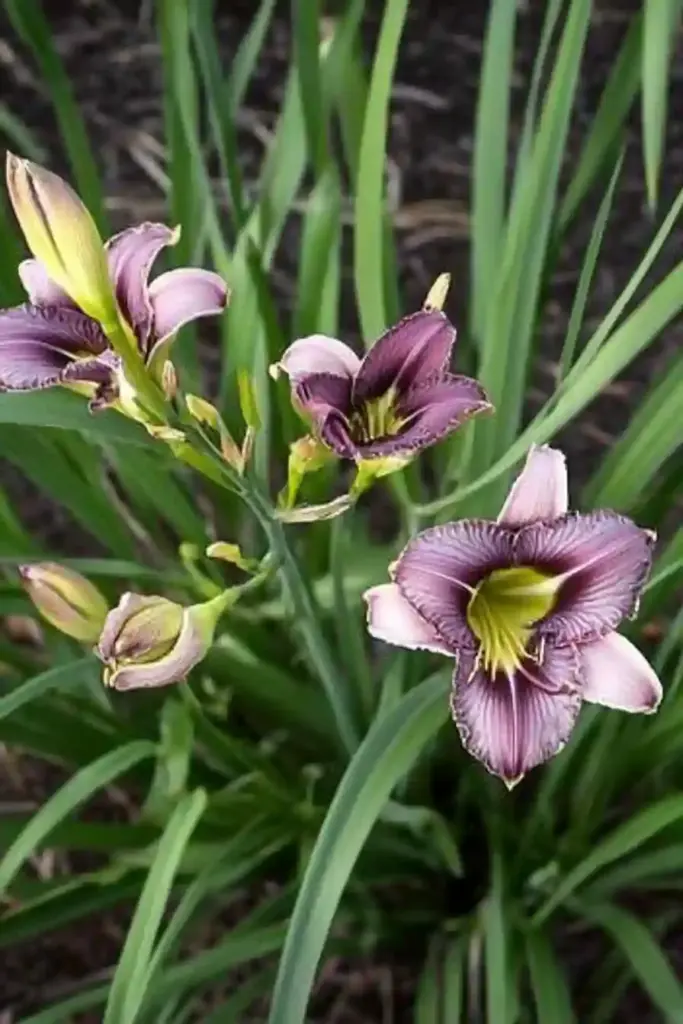
Zones: 3–9
Bloom Time: Late spring through summer
Height: 1′–4′
Spread: 2′–4′
Daylilies are the definition of a “plant it and forget it” perennial. With graceful, arching foliage and trumpet-shaped blooms, they add a burst of color to any sunny bed or border—and they do it with very little help from you.
Each bloom may only last a single day (hence the name), but don’t worry—these plants produce tons of buds over a long bloom period, and many modern varieties are re-bloomers. They’re drought-tolerant, adaptable to a range of soil types, and resistant to pests and disease. Honestly, it’s hard to go wrong.
Why it’s a keeper:
- Extremely low maintenance
- Great for mass plantings or mixed borders
- Wide variety of colors and forms
🌿 Design Tip: Group several varieties with staggered bloom times for continuous color from late spring through summer.
🌼 9. Shasta Daisy (Leucanthemum × superbum)
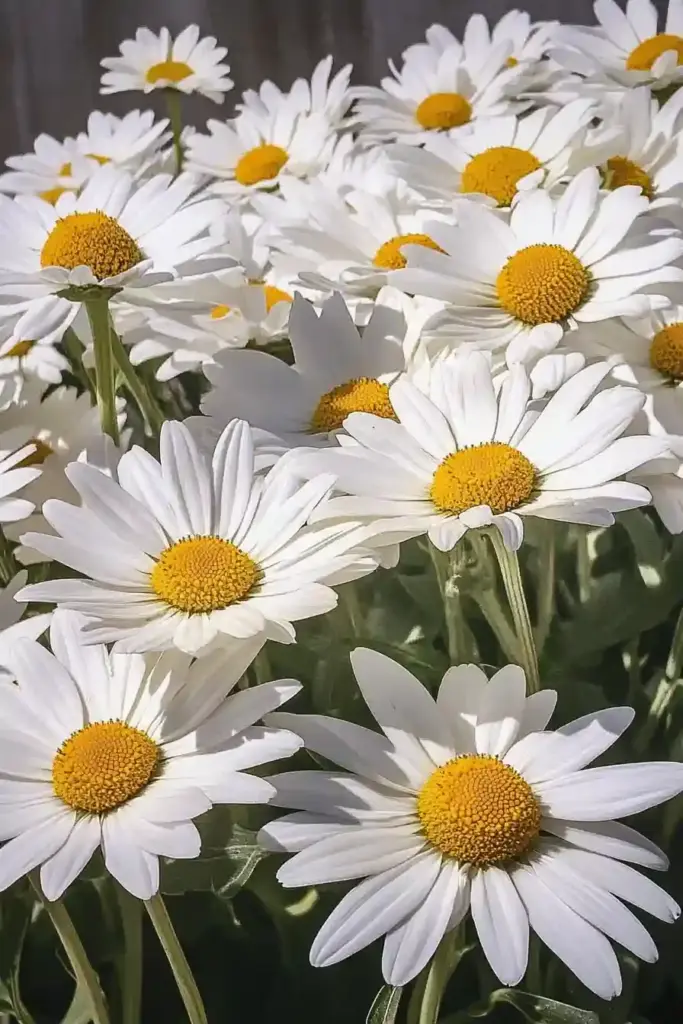
Zones: 4–9
Bloom Time: Early to late summer
Height: 2′–3′
Spread: 1′–2′
With their crisp white petals and sunny yellow centers, Shasta daisies bring a clean, classic look to the garden. These full sun perennials are incredibly easy to grow and bloom generously all summer long, making them a staple in any cottage or pollinator garden.
Shasta daisies prefer moderately fertile, well-drained soil. In fact, too-rich soil can lead to lots of leafy growth and fewer flowers. Once established, they’re drought-tolerant and reliably perennial, returning stronger each year. Plus, they’re deer- and rabbit-resistant—always a win!
Why it’s a keeper:
- Long blooming season
- Classic summer charm
- Excellent cut flower and pollinator magnet
🌿 Bonus Tip: Divide clumps every 2–3 years in early spring or fall to keep them blooming at their best.
🌸 10. Coneflower (Echinacea)
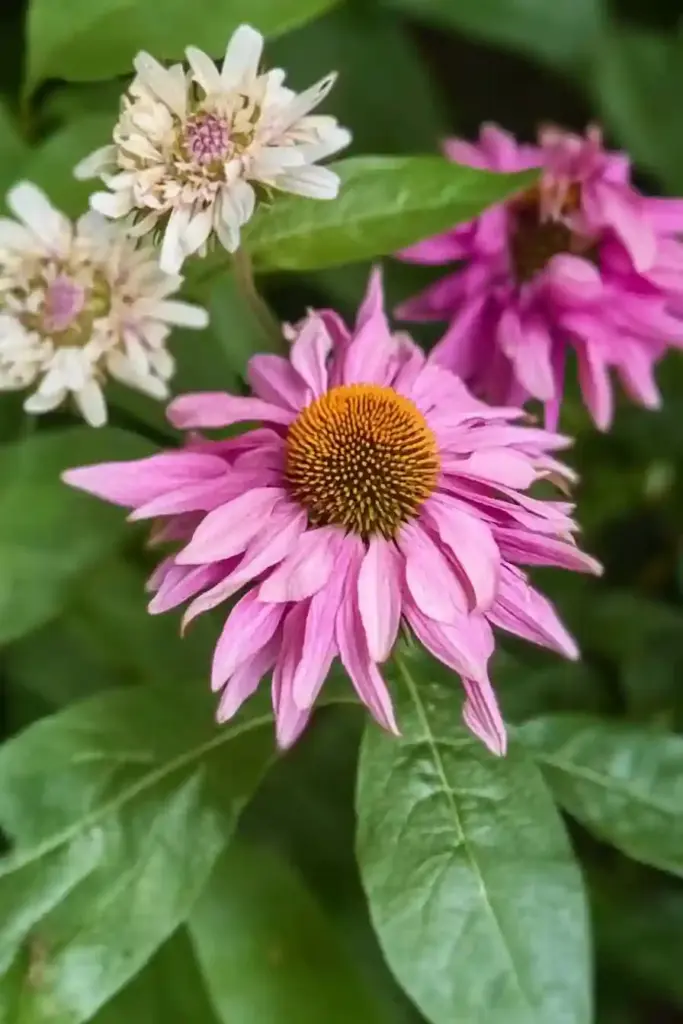
Zones: 3–9
Bloom Time: Mid-summer to early fall
Height: 2′–4′
Spread: 2′–3′
Coneflowers are true garden workhorses. With their daisy-like blooms and prominent central cones, they bring structure, color, and pollinator activity to your garden all summer long. While purple is the classic shade, newer cultivars offer a rainbow of options—from soft pinks and oranges to bold reds and even lime green.
These hardy natives are drought-tolerant, deer-resistant, and thrive in full sun and average soil. They also self-seed freely (which can be a plus or a minus depending on your vibe), so you might find happy volunteers popping up around your garden.
Why it’s a keeper:
- Loved by bees, butterflies, and songbirds
- Excellent cut flowers with long vase life
- Low maintenance and long-lasting
🌿 Garden Tip: Leave seed heads standing through winter for bird food and snowy garden interest.
🌹 11. Polyantha Roses
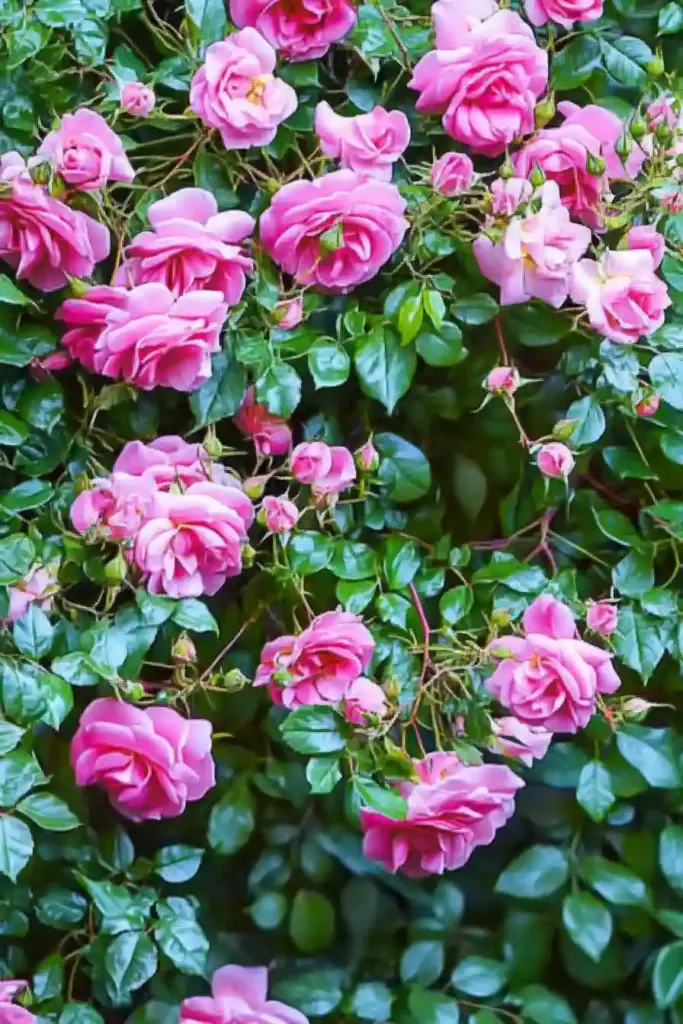
Zones: 4–9
Bloom Time: Late spring through fall
Height: 4′–6′
Spread: Up to 4′
Think roses are fussy? Think again. Polyantha roses are an heirloom variety known for their compact growth, clusters of small, delicate blooms, and impressive disease resistance. These old-fashioned beauties bloom in waves from late spring until frost, with very little intervention needed.
Ideal for full sun, Polyantha roses form thick, bushy plants that can work as standalone shrubs or even low hedges. Just give them good air circulation, prune out dead branches in early spring, and they’ll reward you with nonstop flowers and a sweet, classic fragrance.
Why it’s a keeper:
- Repeats blooms from spring to fall
- More disease-resistant than many modern hybrids
- Great for cottage-style borders and small spaces
🌿 Pro Tip: Mulch around the base to retain moisture and suppress weeds—these roses like their roots cool.
🌺 12. Rose Mallow (Hibiscus moscheutos)
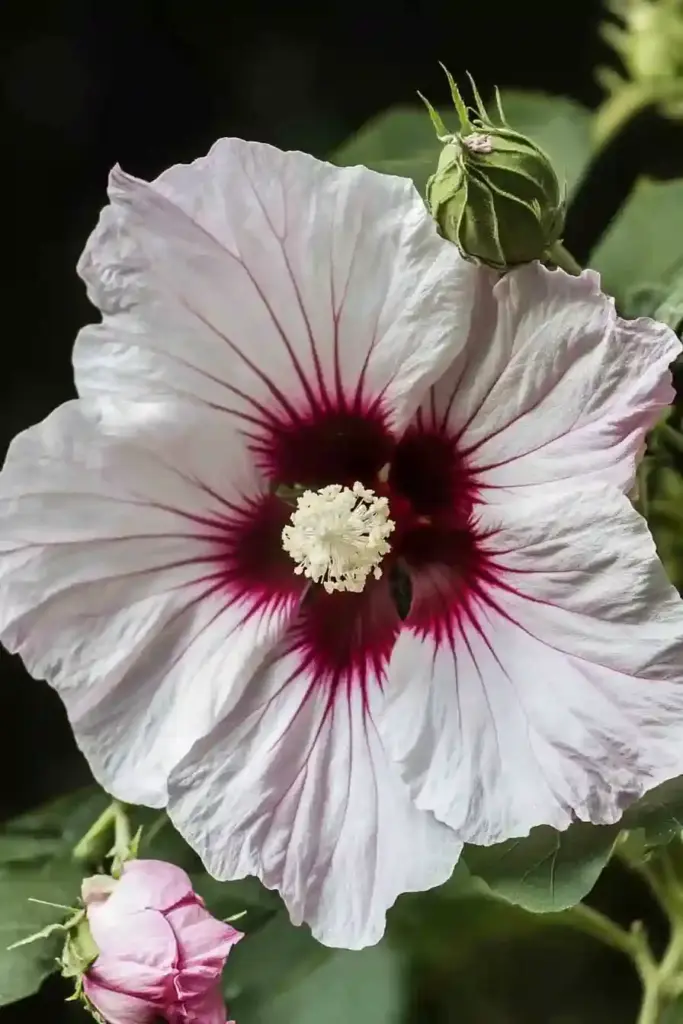
Zones: 4–9
Bloom Time: Mid to late summer
Height: 3′–5′
Spread: 3′–5′
Rose Mallow, also known as hardy hibiscus, brings the tropics to your backyard—without the tropical climate. This North American native produces massive blooms (sometimes 8–10 inches across!) in shades of white, pink, or red that light up the garden in the dog days of summer.
Though the stems are woody, they die back to the ground each winter and regrow vigorously each spring. Just be patient—it’s often one of the last perennials to emerge after winter. Give it full sun, moist but well-drained soil, and plenty of space to spread out.
Why it’s a keeper:
- Huge, tropical-style blooms
- Late-summer color when other plants fade
- Attracts hummingbirds and butterflies
🌿 Growth Tip: Keep soil consistently moist for best blooming. Mulching can help retain moisture during dry spells.
💙 13. Salvia (Salvia spp.)
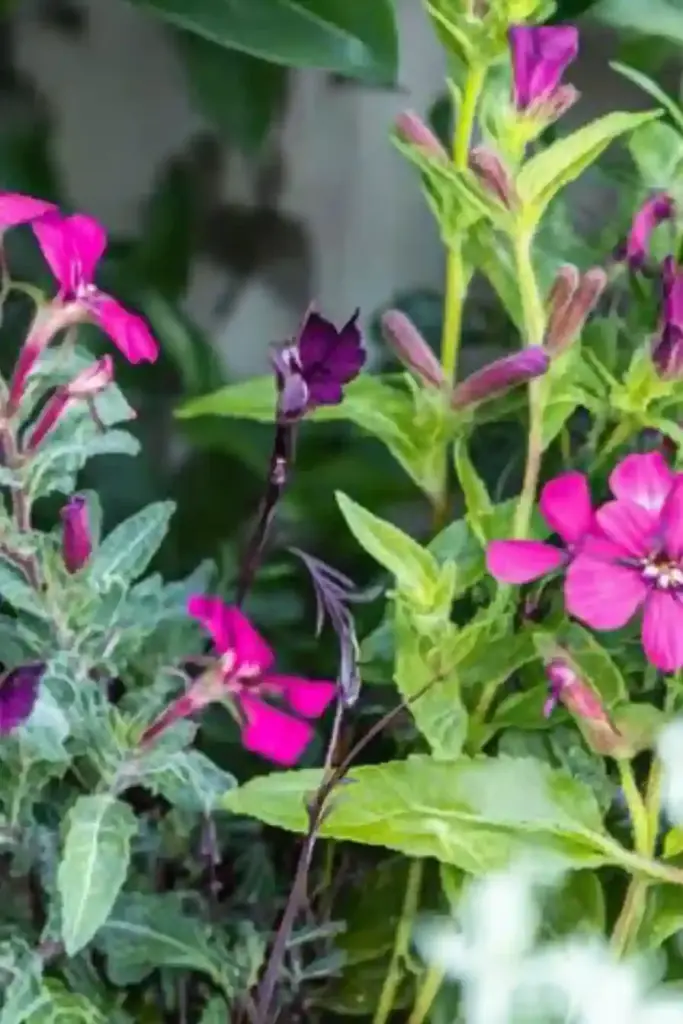
Zones: 5–11 (varies by variety)
Bloom Time: Late spring through fall
Height: 18″–36″
Spread: 18″–24″
Salvia is a sun-worshipping superstar known for its vibrant blooms, rich fragrance, and magnetic appeal to bees, butterflies, and hummingbirds. From electric blues and deep purples to vivid pinks and reds, there’s a variety of Salvia for every sunny border or pollinator garden.
These perennials thrive in well-drained soil and don’t need much pampering—just trim back the faded flower spikes to encourage continuous blooming. Some types, like ‘Black and Blue’ or ‘Hot Lips,’ even perform well in containers, bringing color right up to your patio.
Why it’s a keeper:
- Long-lasting, vibrant blooms
- Attracts tons of pollinators
- Easy to grow and drought-tolerant
🌿 Planting Tip: Check the plant label—some Salvias are perennial only in warmer zones and act as annuals in colder areas.
❤️ 14. Bee Balm (Monarda)
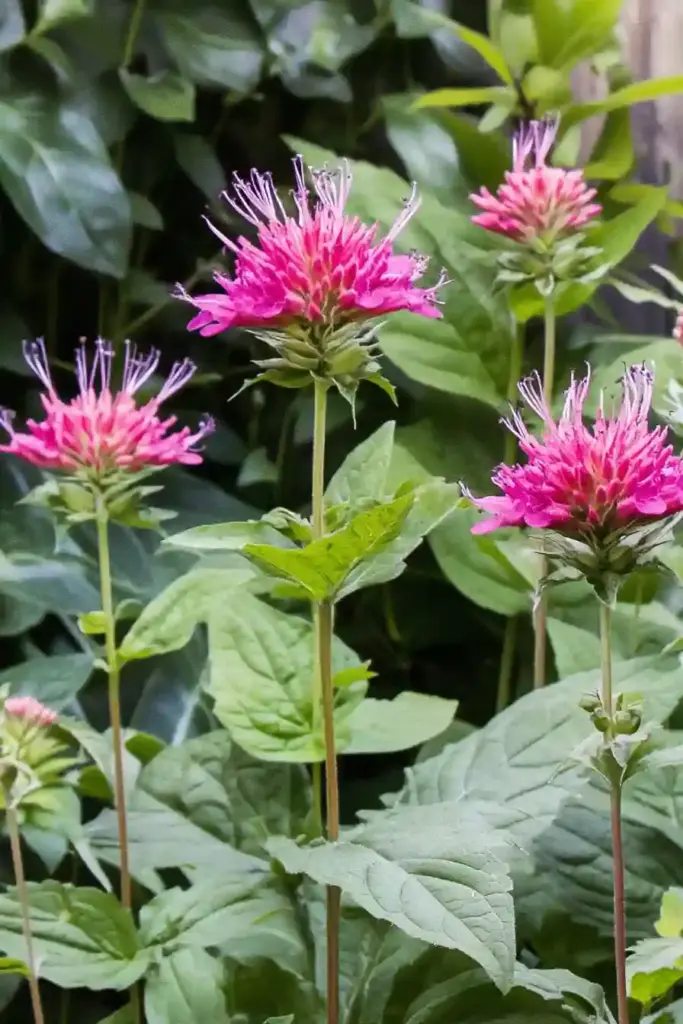
Zones: 3–9
Bloom Time: Mid to late summer
Height: 24″–48″
Spread: 18″–24″
Bee Balm is a bold, fragrant perennial that turns heads and draws in a crowd—of hummingbirds, bees, and butterflies, that is. With its firework-like blooms in shades of red, pink, purple, and white, Bee Balm adds height, color, and movement to sunny garden beds.
It prefers moist, well-drained soil and plenty of sun, though it can tolerate a little afternoon shade in hotter zones. Just make sure it has good air circulation—Bee Balm is prone to powdery mildew, though it rarely affects the plant’s vigor.
Why it’s a keeper:
- Pollinator magnet
- Bold, uniquely shaped flowers
- Native and low-maintenance
🌿 Bonus Tip: Deadhead after the first bloom to encourage a second flush of flowers later in the season.
🌾 15. Pink Muhly Grass (Muhlenbergia capillaris)
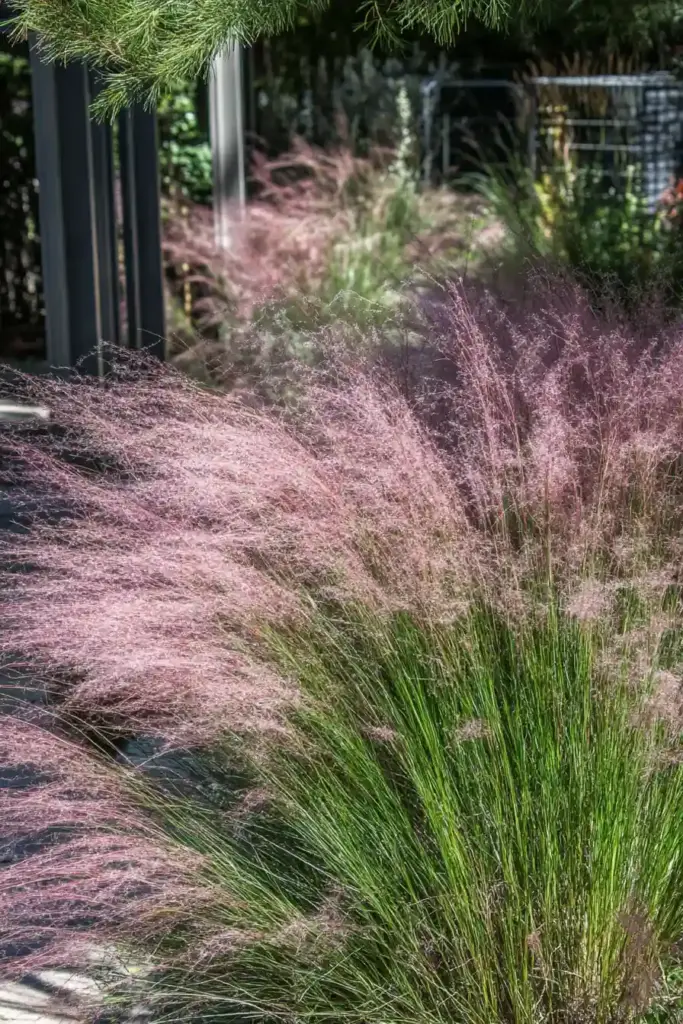
Zones: 5–9
Bloom Time: Late summer to fall
Height: 3′–4′
Spread: 3′–4′
Pink Muhly Grass is proof that not all the garden magic comes from flowers. This ornamental grass produces clouds of airy, cotton-candy-pink plumes in late summer that practically glow in the sunlight. It’s low-maintenance, drought-tolerant, and provides four-season interest—turning golden in winter and swaying beautifully in the breeze.
Perfect for mass plantings, borders, or even containers, it adds softness and movement to any sunny space. And since it’s not as aggressive as other ornamental grasses, it plays well with neighbors in the landscape.
Why it’s a keeper:
- Stunning, feathery pink plumes
- Easy care and low water needs
- Non-invasive and well-behaved
🌿 Design Tip: Use it to line a walkway or backdrop a perennial bed—its glow-up moment in fall is unforgettable.
🔥 16. Red Hot Poker (Kniphofia)
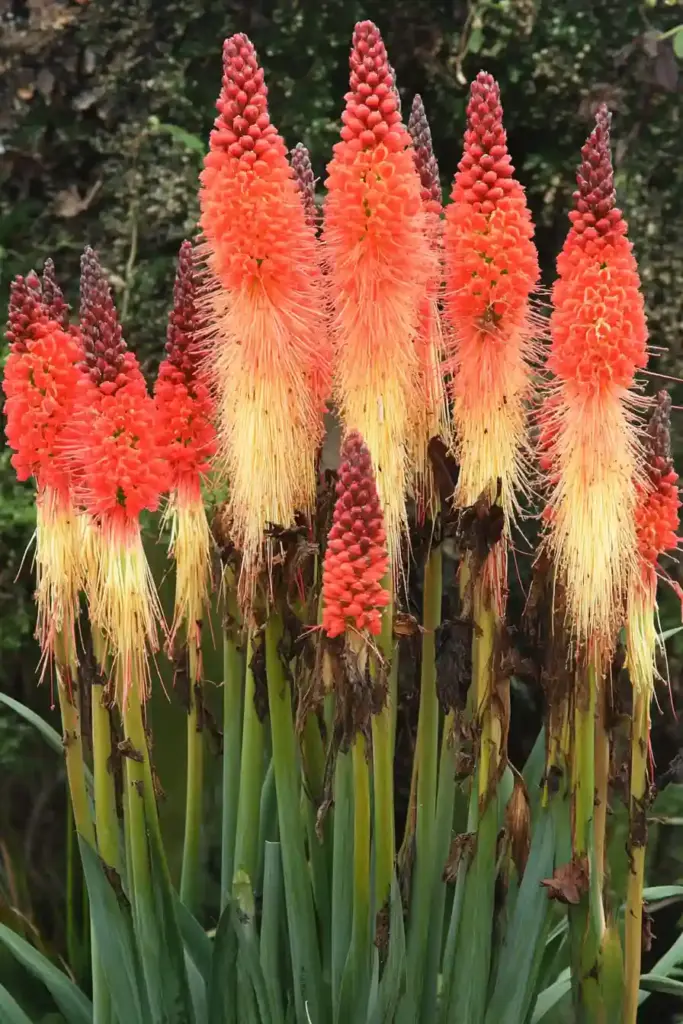
Zones: 4–9
Bloom Time: Summer
Height: 16″–48″ (varies by variety)
Spread: 16″–20″
Red Hot Poker, also known as torch lily, brings bold color and unique texture to sunny borders. Its tall, torch-like flower spikes come in sizzling shades of red, orange, and yellow—perfect for drawing the eye and attracting hummingbirds from across the yard.
This drought-tolerant perennial thrives in full sun and well-drained soil, making it ideal for hot, dry spots. While it looks exotic, it’s surprisingly tough and low maintenance. Just remove spent flower spikes to encourage new blooms throughout the summer.
Why it’s a keeper:
- Unique, eye-catching blooms
- Thrives in heat and poor soil
- Resistant to deer and rabbits
🌿 Pollinator Tip: Red Hot Poker is especially attractive to hummingbirds—plant near a patio or window for a front-row seat.
🌻 Conclusion: Bring Your Sunny Garden to Life, Stress-Free
Designing a garden in full sun doesn’t have to mean battling wilted blooms and constant upkeep. With the right plant choices, you can create a vibrant, pollinator-friendly paradise that thrives in the heat and practically takes care of itself.
From the cheerful faces of Black-eyed Susans to the graceful plumes of Pink Muhly Grass, the 16 perennials we’ve covered offer long-lasting beauty, resilience, and personality for every sunny space in your landscape.
So go ahead—plant boldly, water wisely, and let the sun do the rest. Whether you’re a seasoned gardener or just getting started, these tough, low-maintenance blooms will make your garden glow year after year.

